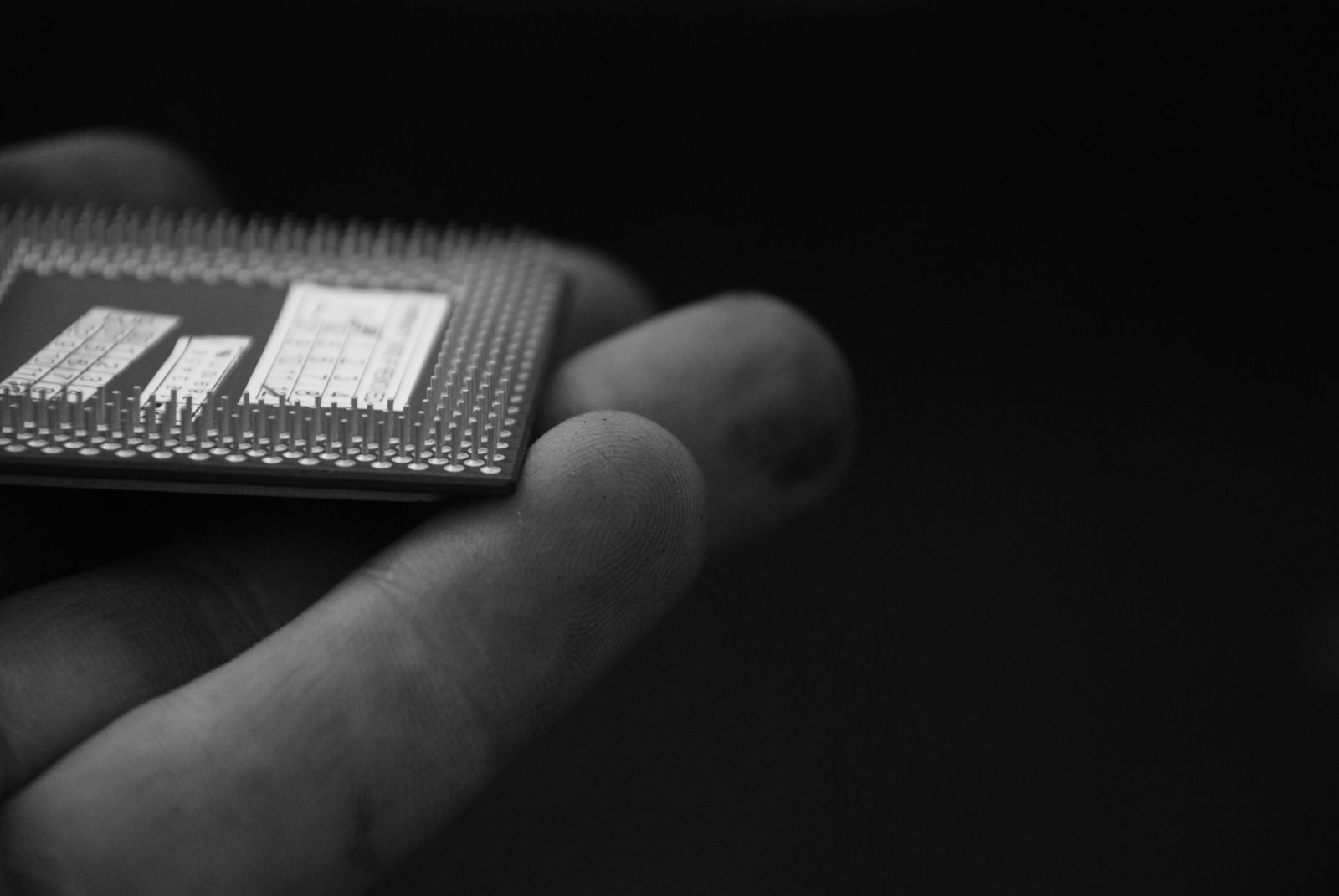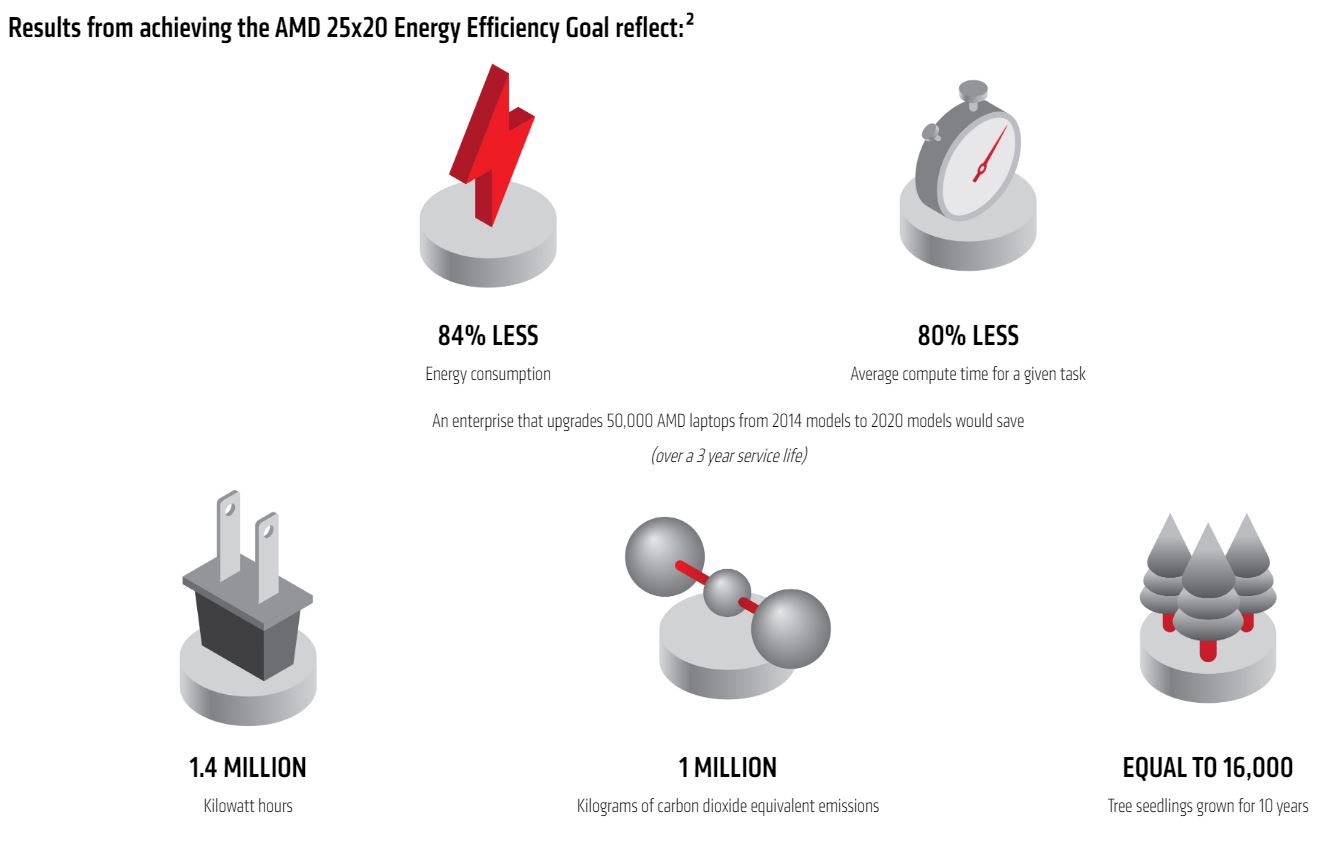 INFRA
INFRA
 INFRA
INFRA
 INFRA
INFRA
Computer chipmaker Advanced Micro Devices Inc. said today it has met a target it set for itself back in 2014 to boost the power efficiency of its Accelerated Processing Units by 25 times by 2020.
In fact, the company said, it has beaten that target by some distance, claiming that its latest Ryzen 7 4800H mobile processors deliver an energy efficiency improvement that’s 31.7 times better than its 2014 baseline. The improvements not only mean better battery life and performance for hardware, but also reduce both energy costs and the environmental impact of its chips, AMD said.
“Our engineering team rallied around the challenge and charted a path to reach our stretch goal of 25 times greater energy efficiency by 2020,” said AMD Chief Technology Officer Mark Papermaster. “We were able to far surpass our objective, achieving 31.7 times improvement leading to gaming and ultrathin laptops with unmatched performance, graphics and long battery life.”

AMD’s APUs have made other improvements too. While energy usage has been reduced by 84% between 2014 and 2020, the average compute time for a given task has also fallen by 80%, the company claimed.
What that means in real terms is that if an organization decided to upgrade 50,000 AMD-based laptops from 2014 to models running its current chips, it would get both the 84% energy efficiency boost and also five times more compute performance. Over a three-year period, that would mean 1.4 million less kilowatt-hours of electricity use, and 971,000 kilograms less carbon emissions. That’s the same as growing 16,000 trees over a 10-year period, AMD said.
That rate of improvement is like a car with 100 horsepower and a 300-kilometer range in 2014 turning into a car with 500 horsepower and a 1,890-kilometer range in 2020, the company added.

The improvements mean that AMD has outpaced the historical power efficiency trend governed by Koomey’s Law, an analog of Moore’s Law that governs computing power trends, by two times over the six-year period from 2014 to 2020.
“AMD’s goal of improving the power efficiency of its laptop processors 25 times by this year may have seemed like a bit of an abstract, arbitrary target when they first announced it six years ago, but as they surpass that impressive goal, it’s becoming significantly more meaningful,” said Bob O’Donnell, president of TECHnalysis Research. “Lower energy consumption has never been more important for the planet and the company’s ability to meet its target while also achieving strong processor performance is a great reflection of what a market-leading, engineering-focused company they’ve become.”
Support our mission to keep content open and free by engaging with theCUBE community. Join theCUBE’s Alumni Trust Network, where technology leaders connect, share intelligence and create opportunities.
Founded by tech visionaries John Furrier and Dave Vellante, SiliconANGLE Media has built a dynamic ecosystem of industry-leading digital media brands that reach 15+ million elite tech professionals. Our new proprietary theCUBE AI Video Cloud is breaking ground in audience interaction, leveraging theCUBEai.com neural network to help technology companies make data-driven decisions and stay at the forefront of industry conversations.